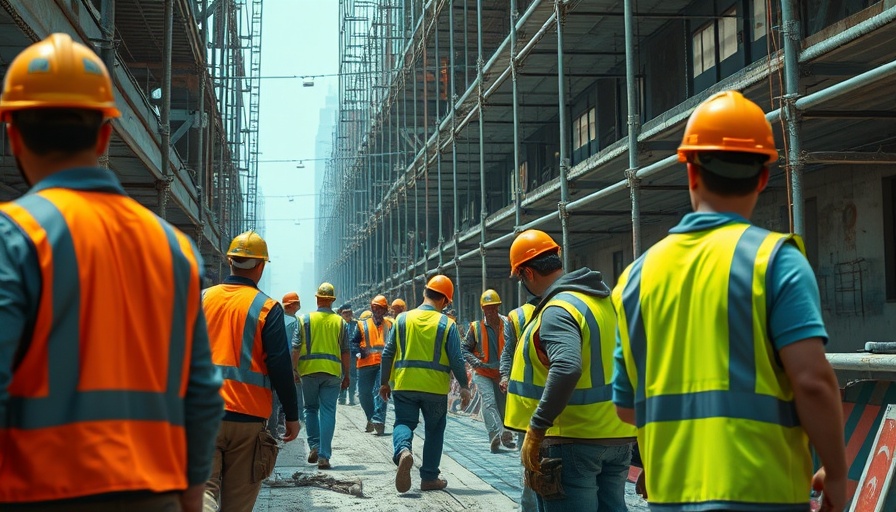
Understanding the Latest Trends in Construction Costs
Recent data reveals a complex landscape for the construction industry, where input costs have seen a subtle decrease of 0.1% in April. This dip is primarily attributed to falling energy prices, particularly a notable 7.1% drop in gas prices. Unprocessed energy materials and crude petroleum also saw significant reductions, 5.0% and 4.9% respectively, contributing to a more favorable environment for contractors and developers focused on cost management.
The Impact of Tariffs on Material Prices
However, not all costs are decreasing. The imposition of tariffs continues to exert pressure on specific materials, particularly steel and copper. Prices for steel mill products surged by 5.9%, while copper wire and cable saw a rise of 5.0%. This trend emphasizes the duality of current market dynamics where cheaper energy costs are at odds with rising tariffs that inflate material prices.
Nonresidential Construction Costs on the Rise
Even with the overall decline in construction input prices, nonresidential construction costs still edged up by 0.2%. This indicates a persistent upward trajectory in areas such as commercial building, challenging business owners and property developers to navigate an unpredictable market.
Expert Insights on Current Market Conditions
Anirban Basu, ABC Chief Economist, noted that while the drop in energy costs is beneficial, the conflicting impacts of tariffs cannot be overlooked. His assessments highlight how tariffs can revive inflationary pressures in a sector that has recently positioned itself to benefit from reduced energy costs. Executives in construction firms, while addressing rising prices due to tariffs, may assure investors of their ability to absorb such costs.
Industry Responses and Strategic Planning
During the first earnings season for public construction entities post-tariff announcements, many executives pointedly downplayed the impact of tariffs on operations. Industries may address these uncertainties by reassessing pricing strategies to maintain margins and competitive positioning. For instance, Stanley Black & Decker announced a price increase to counteract tariff-related expenses, a response reflecting broader strategic adjustments in the industry.
Future Trends and Considerations for Business Leaders
As industry leaders assess these trends, the focus must shift towards strategic planning that incorporates potential cost fluctuations driven by tariffs. A robust understanding of current and projected materials pricing will be essential for business owners and executives seeking to make informed decisions when budgeting for construction projects. Engaging in foresight planning can enable proactive management of costs, risk mitigation, and ultimately preserve financial health amid these challenges.
Need for Strategic Adaptation
In this evolving environment, it is crucial for business owners, facility managers, and property developers to remain vigilant and adaptive to changes. Being proactive about understanding the market movements, leveraging data analytics for cost predictions, and implementing efficient project management practices will be vital for maintaining competitiveness and maximizing investment returns.
To successfully navigate the complexities of current construction costs and tariffs, industry stakeholders may want to consider establishing tighter budget controls, diversifying supply chains, and investing in long-term supplier relationships to ensure price stability as much as possible.
By developing a keen understanding of market dynamics and proactively addressing potential cost increases, stakeholders in the construction industry can better position themselves for future success.
 Add Row
Add Row  Add
Add 




 Add Row
Add Row  Add
Add 

Write A Comment